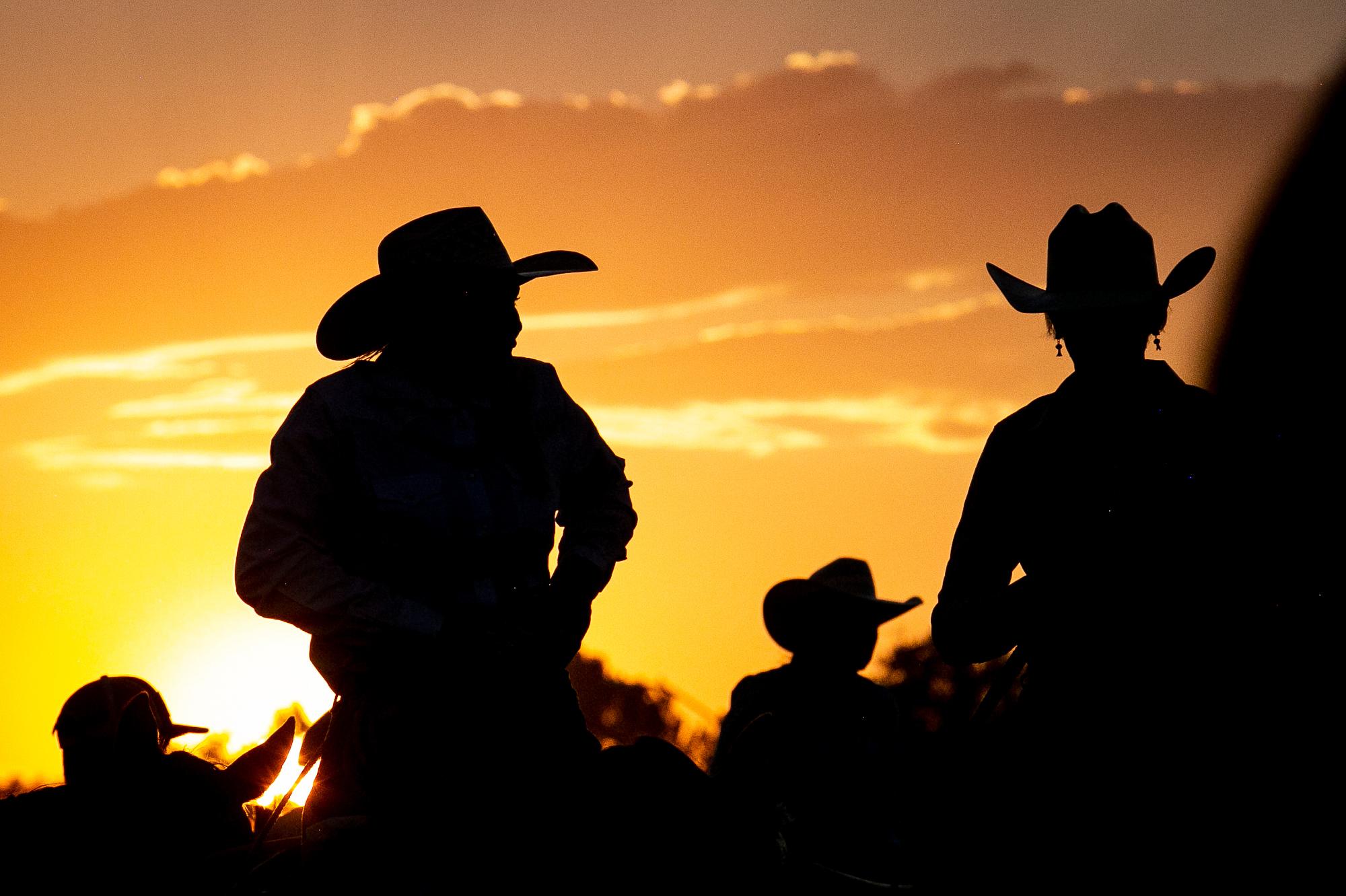
Lyle Nichols‘ yard outside of Palisade is filled with an eclectic mix of items like metal coils, slabs of granite and stone, old appliances, and bowling balls.
“I’m only down to about 200 bowling balls,” Nichols says. “I had 400 and gave 200 away to another artist, who was very pleased.”
He actually had a lot more stuff in general — things he had found over the years at yard sales, in junkyards, at a few auctions and when people left materials at his gate. It’s all raw material for his art. But lately, Nichols has been paring down his collection. He was even on the reality TV show “American Pickers” recently to get rid of stuff, including a chair he crafted from peach wood branches.
“I’ll be 70 this September and somebody’s going to have to pack it out of here if I don’t,” Nichols says of his downsizing collection. “I call myself retired and retirement to me means is I don’t do commissions for people anymore, I don’t try to sell [art].”
Nichols has been turning discarded items into art for decades. A lot of his work involves hauling heavy materials, such as the 14-ton gazebo-like sculpture in his front yard called “Paradox.” He made it more than 30 years ago, putting it together bit by bit.
“It’s like an ant building an anthill,” Nichols says. “I lifted 20 pounds, 30 pounds. That’s all and just putting it together like a giant Erector Set.”
Beyond Nichols’ yard, you can see his artwork in cities like Palisade, Grand Junction, Fruita, Westminster and Cheyenne, Wyoming. You can also check out 11 of his pieces at the Hole N” The Rock in Moab, Utah. The tourist magnet claims to have the largest collection of Nichols’ work.
In September, the Palisade Art Vision, which formed several years ago to promote art in the town’s public spaces, will give out the first-ever “Plug Nichols Award.” Named in Nichols honor, it will go to someone who has made a significant contribution to the town’s public art program.
Gary Hauschulz, an artist with the Palisade Art Vision committee, says Nichols and his art have left a impression on the area.
“It’s hard to go anywhere in town that you don’t have a presence of Lyle,” Hauschulz says. “I went to a hydraulic store for a crane part and there on the cabinet is a picture of Lyle.”
Hauschulz thinks part of the appeal with Nichols art is that it’s accessible, not esoteric to the point where you’re trying to figure it out.
“You look at the piece, and you look at the title, and then you smile,” Hauschulz says.
Hauschulz points to a fish sculpture called “Harley” in the Palisade Plaza as an example. Its gills are constructed from chrome Harley Davidson motorcycle mufflers. Hauschulz says it often draws the attention of bikers at the nearby saloon.
Nichols was born in the Grand Valley. After high school, he got a job delivering parts for a car dealership in Grand Junction. Then, in 1968, he was drafted into the Army and sent to Vietnam. He eventually landed in Denver, working in construction. That’s where he began seeing possibilities in discards.
“I just noticed so many things being tossed away, dumpsters full of stuff,” Nichols says, “and I started doing woodwork out of scrap lumber out of dumpsters.”

When Nichols moved back to the Western Slope in 1982, he and his wife purchased a barn just outside of Palisade and converted it into their home. Nichols continued his woodworking, but also began using materials like stone, rocks and steel. He had no formal training. He’s figured it out along the way.
Nichols’ wife, Phyllis Holt, believed in his artistic abilities. Nichols says she covered the bills early in his art career. About 15 years ago, she died from cancer.
“The year she died, I sold a sculpture for like $60,000 and I wish she was there to see that,” Nichols says.
The artist’s signature works include life-sized horses and large chickens, including a special one in Fruita to commemorate “Mike the Headless Chicken.” There are also elk crafted from railroad spikes and a squash made out of ‘squashed’ garage springs.
In 2009, Nichols made a cow named “Dolly” for the city of Westminster. She’s tucked into a shopping center, which is the former site of the Shoenberg Farms dairy operation. To make “Dolly,” Nichols used about 800 tools and parts from equipment that had been used at the farm. When you get close up, you notice something else.
“Every piece that I put in that had a name or a manufacturer or something interesting, I try to make it face out on that particular tool,” Nichols says. “So hopefully, it’ll be there a long time and there’ll be inquisitive minds wanting to know a little history.”
John Hachmeister, an associate professor in the Department of Visual Art at the University of Kansas, says this aspect of Nichols’ art makes him stand out in the larger grassroots art movement. He says artists like Nichols, who are typically self-taught, tend to “use whatever’s at hand, whatever is in their environment… [and] create things that stand as monuments to their life experience. So, Lyle is reaching out to a much larger public.”
Lorie Gregor, the recreation coordinator with the city of Grand Junction’s Parks and Recreation Department and staff liaison for the Arts & Culture Commission, says Nichols, who participated in the city’s Art on the Corner program for years, has been a community asset in many ways.
“He’s a real ingrained part of the art culture here in the valley,” Gregor says. “I think almost everyone knows him. And [he] is always willing to help people out with whatever they need.”
Even though Nichols is retired, he says he still gets the urge to create: “I have the affliction of wanting to make [art], so I still go out and do it just to keep active.”








